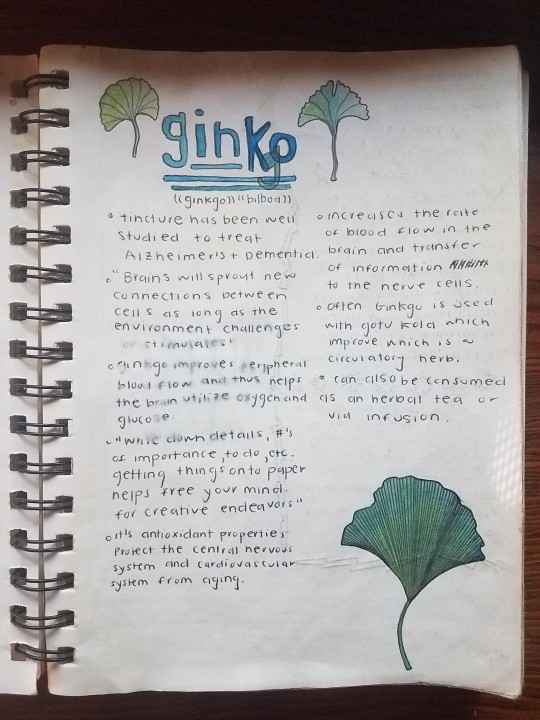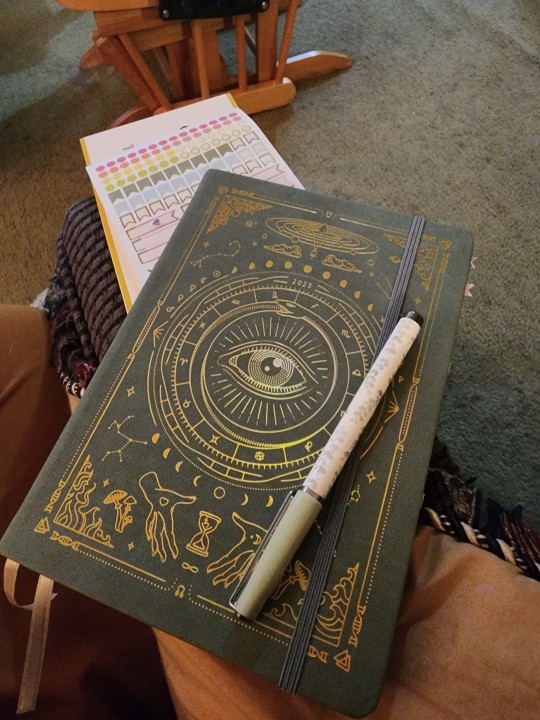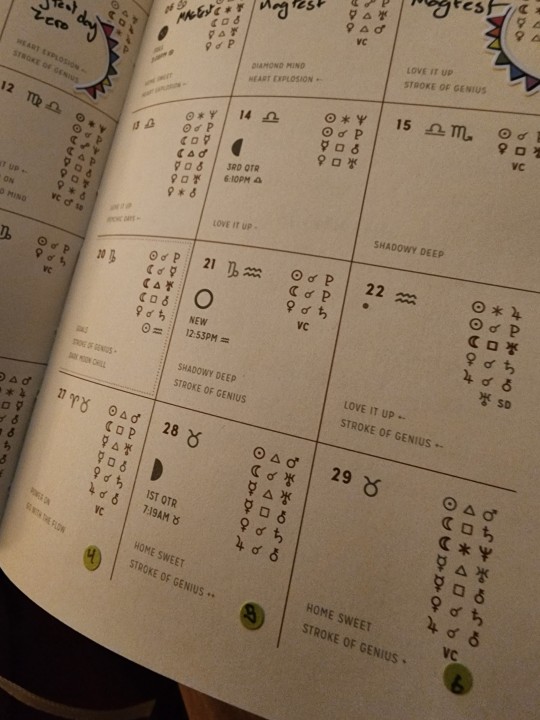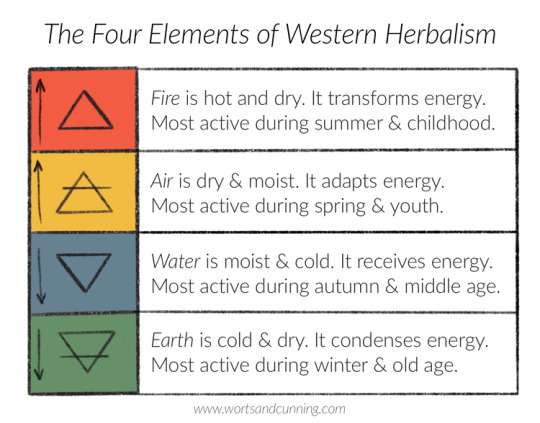#astroherbalism
Text
Pages from my astro-herbalism grimoire ~ 2018




6 notes
·
View notes
Text
I can't even be mad about this name change forced on me as a test to see if perhaps I will no longer get 300+ keysmash-name followers overnight, because I love marshmallow (the plant) and whenever I am feeling extremely off-kilter and tense and hot, I make some marshmallow root infusion with oat tops and feel that soothing lunar goodness bring me back to myself.
#astroherbalism#she's a cancer sun/rising with an exalted moon conjunct jupiter in its joy#an astrologer once told me 'congratulations on your moon' and I've never forgotten it#she's so op in my chart but I'm not mad because it means I am Thee Coziest
1 note
·
View note
Text
My Magic of I astroplanner arrived and I'm going to go hard with the planner stickers to make it work for me.


Very excited to incorporate the Celestial Movements in my practice :)
1 note
·
View note
Photo

Naturopathy enlightens our knowledge about the power of herbal plants and the health benefits of plant-based medicines. A naturopathy course gives students a deep insight into traditional medicines and holistic approaches and rewards them with a healthy and happy life.
To register for the online and in-person courses on naturopathy offered by the College of Medicine and Healing Arts, visit:
https://comha.org.uk/diploma-in-herbal-and-naturopathic-medicine-course/
#uropath naturopathcourses#nat#medicalherbalism#astroherbalism#spiritualherbalism#herbalismforlife#herbalism
0 notes
Text
Astro Herbalism
Most of us know what are our zodiac sign is, some of us know what our birth stone is, but have you ever wondered what herbs or roots would benefit you best according to your zodiac sign?
Each of the twelve zodiac signs can benefit from the properties of certain natural herbs and roots, which help heal, soothe, repair, inspire and create balance within us.

medical astrology
From the north to the…
View On WordPress
#ancient#astroherbalism#astrology herbs#astromedicine#ayurveda#babylonians#balance#cosmos#eygpt#greeks#healing#health#Herbalism#holistic#india#magick#medical#nature#planets#plantkingdom#plantpower#romans#stars#starseed#TCM#tibet#tinctures#Universe
0 notes
Photo

ASTRO/HERBALISM// '...Walnut is useful at all the transition points in life, from birth to teething to going to school... and beyond. It helps break links with the past so we can move forward more easily.' (bachcentre.com) This would be a good week to use walnut. South Node activity needs to be lived in a particular way: both embracing the gifts we've inherited from our karma while also overcoming the debts. Eclipses are always near the nodes, in fact this is what causes them (very long to explain, better you google it). Regram @dr.mousebreath #astroherbalism #astroherbology #astro #astrology #newmoon in #pisces #eclipse #southnode #walnut essence #bachflowers #remedy
#remedy#astrology#bachflowers#astroherbalism#newmoon#pisces#eclipse#walnut#astro#astroherbology#southnode
0 notes
Photo

🌻 FOLLOW 👉 @pdxastro ~ . . 🌞 One of the featured items inside of the 2019 Solar Embrace Sabbat Box was the Solar Shine Tea by Comosphilia Astrological Herbals. **USE CODE: SABBATBOX TO GET 10% OFF + FREE SHIPPING FOR LIFE AFTER YOUR FIRST PURCHASE** . . 🌞 Cosmophilia’s Solar Shine Tea is a blend of solar plant energy, consisting of calendula, chamomile, safflower, Saint John’s Wort, and citrus peel, which gives it a bit of a vibrant kick. Brew some of this tea hot for your Midsummer ritual, or pour some over ice for a refreshing drink on a hot summer day! Each ingredient has been carefully chosen to honor the sun and its many gifts to us: sustenance, light, energy, and vitality. . . 🌻 Located in Portland Oregon, Cosmophilia Astrological Herbals and Magical Gifts is located inside the Portland School of Astrology. Cosmophilia's mission is to remind us of our hearts connection with the heavens through their line of affordable celestially-imbued products. The Portland School of Astrology is the largest astrology school and community in the United States with a variety of educational opportunities, free resources/classes and community connections. . . 〰️ Cosmophilia Astrological Herbals and The Portland School of Astrology was founded by JP Hawthorne. JP began his journey with astrology and herbalism in the mid-'90s, later wedding the two disciplines and working with clients in 2011. In 2013, he founded the largest astrology school in the U.S., the community-focused Portland School of Astrology with a unique and challenging goal of continually striving to teach astrology through social justice frameworks. JP's shares his extensive practice and foundation with astrology, herbalism, and the magickal arts through classes, lectures, podcasts, and community work in Portland. . . #sabbatbox #midsummer #cosmophilia #astrology #astroherbalism #queerastrology #witch #witchy #witch🔮 #witchesofinstagram #witchesofinstagram🔮🌙 #pagan #paganism #pagansofinstagram #witchaesthetic #altar #crystals #herbmagic #greenwitch #hedgewitch #wicca #wiccansofinstagram #wiccan #newage #magick #wheeloftheyear #sabbats #witchcraft #witchery #witchinghour http://bit.ly/2KXtUnO
0 notes
Photo

Herbalism is the study of pharmacognosy and the use of medicinal plants, which are a basis of traditional medicine.
The College of Medicine and Healing Arts offers a Diploma in Herbal and Naturopathic Medicine programme in the UK and internationally for those who wish to practise Unani Tibb as a professional. The training provided by the College is some of the most authentic training of Unani Tibb, provided in traditional practices incorporating appropriate modern knowledge and skills.
To register for the course, visit:
https://comha.org.uk/diploma-in-herbal-and-naturopathic-medicine-course/
#herbalism#herbalismforlife#spiritualherbalism#astroherbalism#medicalherbalism#intuitiveherbalism#herbalismomagico#westernherbalism#holisticherbalism#traditionalherba#herbalismlism#learnherbalism#herbalismcourses#alternativemedicine
0 notes
Text
The Four Elements of Traditional Western Herbalism: Part One

Alexis J. Cunningfolk
The energetics of traditional western herbalism are fascinating to study and useful to know when it comes to working with the people we serve as herbalists. In my practice, traditional western herbalism energetics help to shape my work with plants and people.
Studying energetics, and especially the four elements, we can begin to synthesize the vast and varied traditions and cultures of traditional western herbalism from its astrological roots, its magickal foundations, and its modern breakthroughs. The language of energetics also offers us another way to speak of the experiences we have as people, serving to connect us back to our bodies, our thoughts, and our feelings so that we understand ourselves and our world better.
In this series I'll be focusing on one part of traditional western herbalism energetics: the four elements. We'll look at where the four elements intersect with humoral theory, the zodiac, and how we might begin to apply four element theory to our practice. My hope is that this will be a useful and clarifying introduction to the four elements of traditional western herbalism and that you'll feel inspired to bring some aspect of this theory into your own practice. Engaging with the four sacred elements helps to connect our practice as herbalists more deeply to the sacred and deeply interconnected aspects of our work - and that is healing in and of itself.

Traditional Western Herbalism Energetics
The four elements are part of the energetic system of traditional western herbalism which also includes concepts like the three spirits, the six tissue states, and other esoteric and astrological principles. The phrase "herbal energetics" gets used in a number of ways, including as an interchangeable term for herbal actions (i.e. astringent, digestive, emollient, etc.). In this course and my work in general, I use the term energetics to describe the ways that herbs are defined primarily through an elemental based system codified by ancient Egyptian, Greek, and Arabic scholars (i.e. the foundational cultural traditions of traditional western herbalism that made their way through Europe and eventually the United States). It's important to note that there are many variations of how the four elements are defined and applied in practice within traditional western herbalism - and even the ancient Greeks laid significant foundations of the elemental practice within traditional western herbalism that you see today contradicted themselves and each other when defining the elements.
In addition to ancient Greek and Arabic tradition, the works of Galen and Culpeper, my elemental practice is influenced by my training in the United States and the Physiomedical tradition. My magickal training and practice as a modern Pagan and Witch also shapes my understanding of the energetics of the four elements as the four elements are not only foundational in my healing practice, but my spiritual practice (which are inextricably intertwined). Ancestral and indigenous tradition as well as direct experience shape my understanding of the elements, too. It is important when studying any modality, but especially a culturally diverse and living tradition that is traditional western herbalism, that we seek out what works for us, engage with but not become hindered by what challenges us, and ultimately choose the path most relevant and inspiring to our work as herbalists and the land, people, and creatures we serve.
As always, I am trying to share with you what I have found useful and inspire you to improvise and adjust as needed.
Understanding herbal energetics is essential for understanding traditional western herbalism, astroherbalism, and the broader scope of medical astrology and lunar-centered healing work. What follows is a description of the four elements, starting with some of their ancient traditional western herbalism origins. Not all of these concepts will feel relevant to your own practice or maybe even of much interest, but I do think it is good to have passing familiarity with these concepts as they show up again and again in older texts on traditional western herbalism and medical astrology. Even though I don't use the language of the four humors in my practice, for example, understanding them has helped me better grasp the roots of healing philosophies of traditional western herbalism and informs my understanding of the six tissue states which I do use in my practice.
In other words, we'll be strolling through older concepts that describe the fundamental roots of traditional western herbalism practice, get to know the four elements from an ancient and modern perspective, and then conclude our tutorial with a look at ways we can become elementally-centered in our own life and practices.
Defining the Four Elements
Let's start with defining the four elements. In the Greek tradition (which was most likely influenced by older Egyptian practice) the four elements are categorized by the primary qualities as follows:
Hot
Dry
Moist (alternatively called Wet or Damp)
Cold
The four elements were further defined by secondary qualities moving from heavy to light as follows:
Earth: heavy, firm, stable, dense, sustained and enduring energy that centers and moves downwards
Water: moderate heaviness, soft, slippery, smooth, easily adapts to different shapes and spaces, receptive
Air: light, thin, subtle, adaptable, porous, moves energy upwards
Fire: absolute lightness, bright, very rare, transforms and transmutes energy into other qualities

To understand the Qualities and how they show up in modern western herbalism we have to do a bit of "yes, and" thinking. Yes, Hot is descriptive of temperature in some ways and it is far more than that. Within traditional western herbalism the vital spirits which give life to the body (also known as pneuma and similar in nature to prana or chi) was understood as warm and radiating life-giving breath. So Hot is describing the heat of life as opposed to the coldness of death. The element of Air, seen as delivering the breath of life throughout the body, is viewed as Hot in nature because life requires heat. In modern western herbalism we would describe many Air herbs as circulatory tonics helping to deliver nutrients, warmth, as well as strengthen the heart (one of the seats of pneuma in the body), carrying on the ancient tradition of viewing Air as an element of Heat.
Next, the four humors describe the processes of synthesization of the elements in the body and are a way of describing chemical reactions of the body (i.e. metabolic function). Developed during the Greek period of Hippocractic medicine, the Four Humors are:
Blood
Phlegm
Yellow Bile
Black Bile
The humors were seen as the human scale equivalent of the four elements found in nature. The Blood Humor, for example, corresponds to the element of Air which is Hot and Moist, plentiful in a healthy body, seen to be produced by the liver, and supportive of circulation and distribution of nutrients. In modern terms we would see the Blood Humor as, in part, a key component in the function of cellular metabolism in the body. As we'll see in a moment, even if the concept and language of humors is not widely used by herbalists trained in the western tradition (at least here in the United States), the way we talk about Air and its energetics in herbalism is still influenced by humoral theory. If you're wanting to learn more about humoral theory I recommend Graeme Tobyn's excellent book Culpeper's Medicine (full details in the resources below).

Finally, we have the concept of temperaments which is the way that the elements manifest in the body and personality of a person. In other words, the temperaments described a person's inherent constitution. Everybody is a mix of temperaments, though typically one or two temperaments are more prominent. Again, for more on the temperaments, I highly recommend reading Culpeper's Medicine by Graeme Tobyn. The four temperaments are:
Sanguine (Air-predominant Temperament)
Phlegmatic (Water-predominant Temperament)
Melancholic (Earth-predominant Temperament)
Choleric (Fire-predominant Temperament)
The four elements are also linked to the four seasons of the year because the body is a reflection of the world around it and the world a reflection of the body. The four seasons and elements are:
Spring: Air
Summer: Fire
Autumn: Water
Winter: Earth
Finally, the four elements were applied to the zodiac with each of the twelve signs seen as embodying one of the elements. The elements of each sign of the zodiac are as follows
Air: Gemini, Libra, Aquarius
Water: Cancer, Scorpio, Pisces
Fire: Aries, Leo, Sagittarius
Earth: Taurus, Virgo, Capricorn
Now for a slight deviation into a bit more astrology but something which is very useful when understanding the nuance of the four elements. Each of these three signs within the four elements embody different aspects of the elemental quality. Within astrology there are three Qualities (also known at Modes as in "modes of energy") known as Cardinal, Fixed, and Mutable.
Cardinal signs (Aries, Cancer, Libra, Capricorn) mark the beginning of a new season (Aries marks the start of Spring, Cancer the start of Summer and so on) and their energy is initiating. So Aries embodies the swift and initiating energy of Fire, like a sudden spark of flame or intense rise in heat like in a fever. Fixed signs (Taurus, Leo, Scorpio, Aquarius) mark the middle of a season and their energy is slower and steadier (think of the phrase "fixed in their ways"). The energy of Leo embodies the steady and sustaining energy of Fire, like a long summer days or an oven fire. Mutable signs (Gemini, Virgo, Sagittarius, Pisces) mark the end of a season, when energy is starting to change direction and are very adaptable in nature. Sagittarius embodies the unexpected and adaptable nature of fire, at one moment lighting the tip of a small candle and the next burning through a forest.
So, as you can see, the quality of the element adds nuance to how it appears in a person, a plant or a condition. Looking at the qualities when it comes to healing work, cardinal energy can manifest in short-acting, acute conditions that quickly arrive but just as quickly pass. Fixed energy can manifest in chronic, inherited, ancestral, and difficult to treat conditions. Mutable energy can manifest as illness that lingers, brings about weakness, and is prone to recurrence.

What emerges from all of the element-based correspondences is a way of seeing the world and ourselves within it. The elements of our inherent constitution interact with the elements of disease (which the ancients would consider an excess or lack of one or more of the humors), the elements of plants, the elements of the seasons, and the elements of the planets and stars. For our ancient traditional western herbalism ancestors, wellness was obtained through elemental balance and attention to the ebb and flow of elemental lack and excess throughout the year and the entirety of one's life. Later on I'll give examples of how we apply this four elements based model to healing care.
The Elemental Temple, Garden, and Seasons
Since storytelling and metaphor is an ancient way of sharing knowledge and we are trying to study ancient wisdom for modern times, here are a few simple ways to imagine the four elements. The first two metaphorical meanderings are borrowed from my lunar rituals and healing series.
Imagine creating a temple out of clay. We need warm and damp (Air) material to initially build the walls of the temple. The heat begins to "cook" the clay that will eventually harden, but it is still early in the process where moisture is present, allowing for the malleability needed to form foundations and walls. Next increased heat and the arrival of dryness (Fire) transforms damp clay and dirt into increasingly sturdy and permanent boundary walls of our space. The walls are still fragile, not yet cool and completely sturdy, but they begin to give shape to our desire of what we hope to bring into our sacred space. After the heating and drying energies of Fire, cooling along with continued dryness (Earth) is required to enable the walls to completely harden - now the temple space is ready to be lived and loved and held in. Cool and damp energies (Water) are necessary for redesigning and reworking a temple space after it has been lived in for a while, bringing back the cool damp of malleability to reshape a space.
For my garden-minded folks trying to create the best batch of compost, the right balance of heat and moisture (Air) are essential to beginning the process of breaking down plant and food material into rich and nutritive soil. Next is the height of heat with the right amount of dryness (Fire) to burn off excess damp. Cooling and drying (Earth) happens next and the compost is ready to be used in the garden. Finally, cool and damp (Water) compost that has been watered and seeded is ready to support the growing cycle in the garden.
Finally, we can think of the elements in terms of the four seasons. The element of Air brings exuberant, outward-moving energy of new life through heat and just the right amount of damp to warm up the land and waters after winter. In summer we are in the height of heat and dryness where the element of Fire reigns and the energy moves upwards. Autumn brings much welcome coolness and moisture, often with rains and the start of the decomposition of plant life that started to die back at the end of summer and through fall. Autumn energy is diffusive, helping the energy of summer settle back down towards the earth. Cold and dry energies of Earth are found throughout winter as energies slow and turn inwards.
None of Us Perfect, All of Us Whole
Having worked with the four sacred elements since the beginning of my studies starting with their magickal application and then their medicinal one, I've come to appreciate one of the lessons reflected back at us when working with this particular system. Each of us are born whole and holy with certain elemental dispositions. Some of us are more fiery and quick to act, others of us are slower, steadier and more considered in our actions. Some of us have an ocean's worth of capacity to feel, others an endless line of energy for philosophizing and storytelling. Each of us have all four elements within us, but we are not born perfect and completely realized. We come to know ourselves and our world by seeking out what we need to support our self-awakening and the greater consciousness of our communities. Within the framework of traditional western herbalism we do that, in part, by finding ways to support the elemental energy we have in abundance and seeking out ways to enrich parts of our elemental self that need extra support.
Your abundance of water nurtures the spaces within me which need to be filled up with Water's wisdom. My earthiness supports the longevity of your airy visions. We feed and hold and support eachother by allowing ourselves to come into balance through engagement with the earth, its people, places, and creatures. We are meant to find one another and heal together. We are meant to come into balance - and fall out of balance - within beloved community.
The Earth of me loves the Earth of you
The Air of me loves the Air of you
The Fire of me loves the Fire of you
The Water of me loves the Water of you
All is whole
whole and holy
🌿
I hope you enjoyed part one of our exploration of the four elements of traditional western herbalism. In part two, I explore what happens when elements are out of balance in the body and how that helps us understand disease. The ancestral philosophies which have formed traditional western herbalism are fascinating and I think that the four elements offer a lot of room for innovation and inspiration. Be sure to check out the additional resources below if you’re looking to dive in deeper.
If you are curious about exploring the seasonal nature of the four elements, my witchcraft and weeds series does just that - check out the posts for:
Spring
Summer
Autumn
Winter

http://www.wortsandcunning.com/blog/the-four-elements-of-traditional-western-herbalism-part-one
0 notes